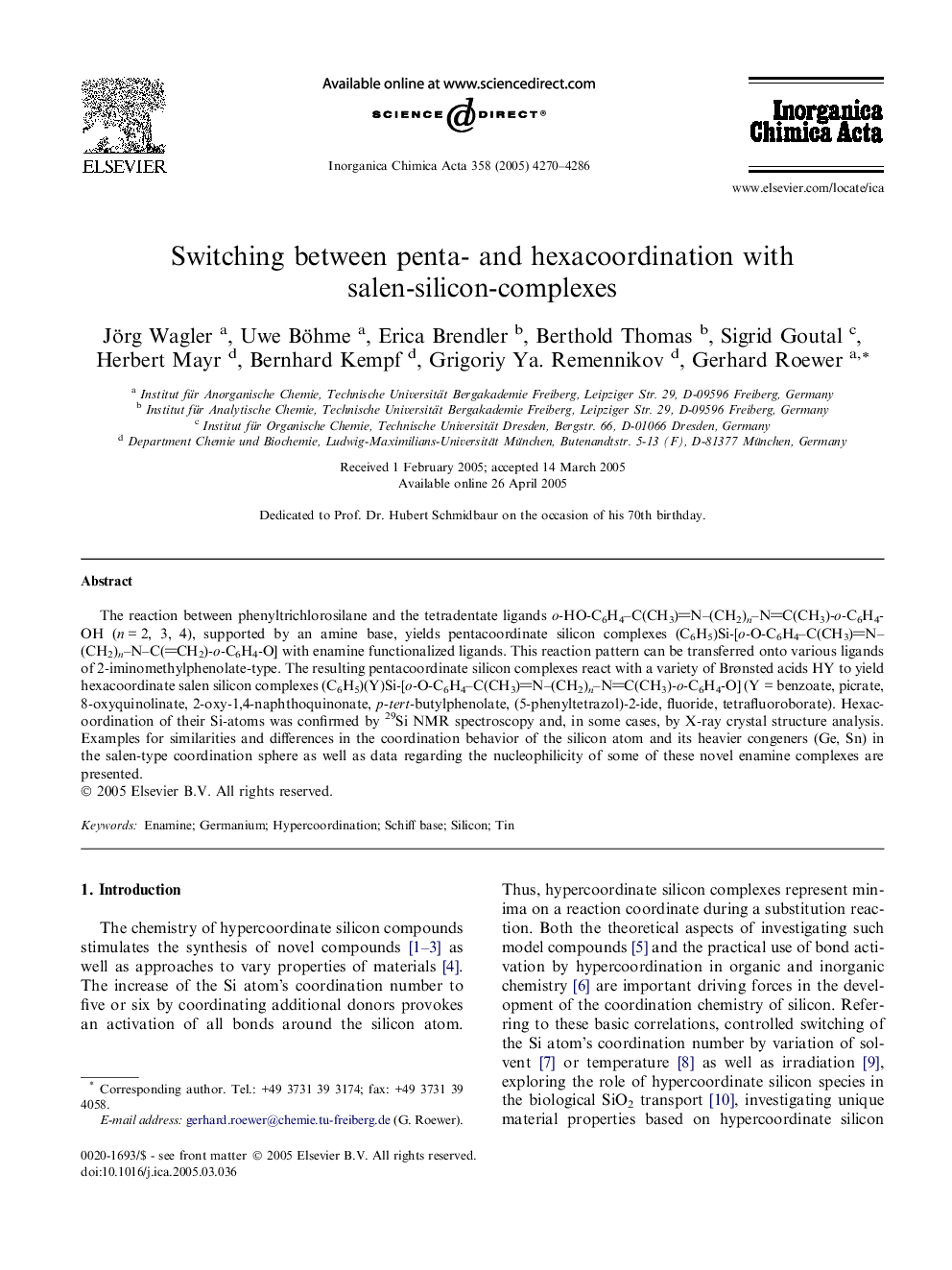| Article ID | Journal | Published Year | Pages | File Type |
|---|---|---|---|---|
| 1308402 | Inorganica Chimica Acta | 2005 | 17 Pages |
The reaction between phenyltrichlorosilane and the tetradentate ligands o-HO-C6H4–C(CH3)N–(CH2)n–NC(CH3)-o-C6H4-OH (n = 2, 3, 4), supported by an amine base, yields pentacoordinate silicon complexes (C6H5)Si-[o-O-C6H4–C(CH3)N–(CH2)n–N–C(CH2)-o-C6H4-O] with enamine functionalized ligands. This reaction pattern can be transferred onto various ligands of 2-iminomethylphenolate-type. The resulting pentacoordinate silicon complexes react with a variety of Brønsted acids HY to yield hexacoordinate salen silicon complexes (C6H5)(Y)Si-[o-O-C6H4–C(CH3)N–(CH2)n–NC(CH3)-o-C6H4-O] (Y = benzoate, picrate, 8-oxyquinolinate, 2-oxy-1,4-naphthoquinonate, p-tert-butylphenolate, (5-phenyltetrazol)-2-ide, fluoride, tetrafluoroborate). Hexacoordination of their Si-atoms was confirmed by 29Si NMR spectroscopy and, in some cases, by X-ray crystal structure analysis. Examples for similarities and differences in the coordination behavior of the silicon atom and its heavier congeners (Ge, Sn) in the salen-type coordination sphere as well as data regarding the nucleophilicity of some of these novel enamine complexes are presented.
Graphical abstractIn the coordination sphere of silicon and germanium salen-type imine compounds o-HO-C6H4–C(CH3)N–R are transformed into enamine functionalized chelating ligands in pentacoordinate complexes. Remarkably high nucleophilicities were determined for these enamine molecules. The addition of Brønsted acids gives rise to the formation of hexacoordinate silicon complexes as well as pentacoordinate germonium salts.Figure optionsDownload full-size imageDownload as PowerPoint slide
